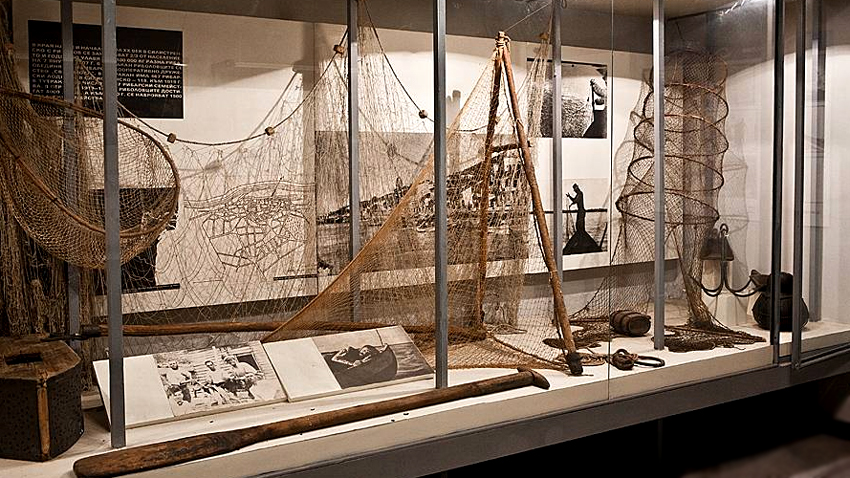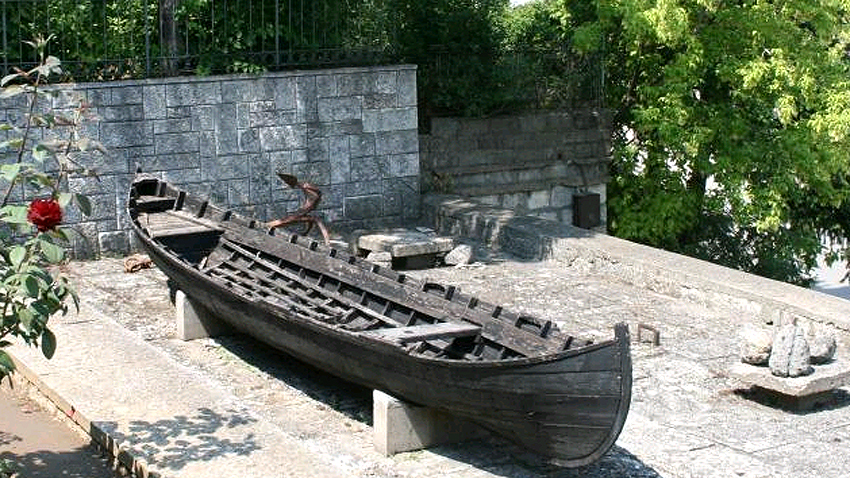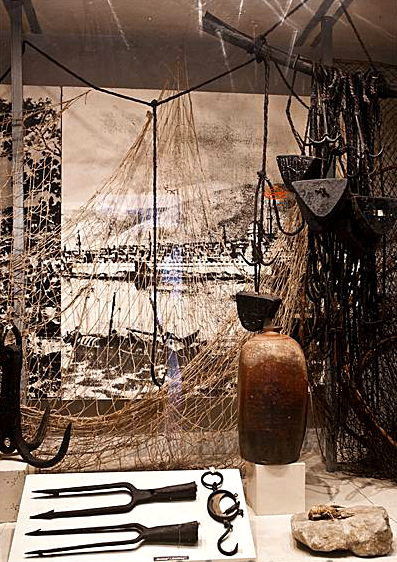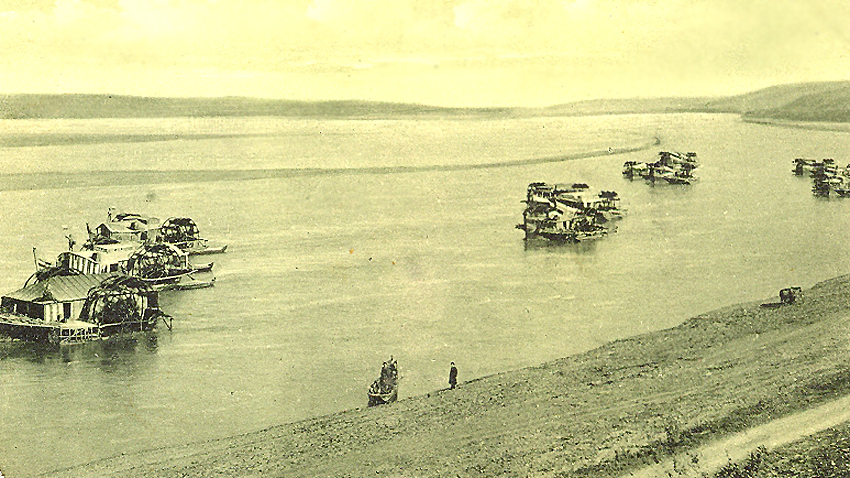Tutrakan has been a fishing community since time immemorial. The good conditions for catching delicious fish in the Danube and the surrounding marshes have always helped people here earn their living.
Archaeological finds indicate that fishing has been practiced here ever since the Old Stone Age, or the 8th millennium BC. There are households in Tutrakan in our day who still fish for a living. The Museum of Danube Fishing and Boat Building in Tutrakan features many exhibits illustrating fishing traditions. The people living here have made a name for themselves as the top-notch fishermen and boat builders of the lower reaches of the Danube.
The museum was created 40 years ago, and new finds and documents are constantly being added to its collection. The exposition is housed in seven halls, arranged chronologically to enable visitors to trace the development of fishing tackle and technique – from antiquity down to our day. Here visitors can see fishing rods made of bone and copper, clay fishing net weights, all kinds of nets made of plant textile fibers etc.

“This museum of fishing is the only one of its kind in Europe and is dedicated entirely to this ancient occupation,” says Velichko Atanassov, curator of the exposition in Tutrakan, an avid angler with a passion for boats and fishing nets.
 “Our museum is visited by a great many tourists every year; it is on Bulgaria’s 100 national tourist sites list. We have many people coming from other towns on the Danube who tell us about their own fishing traditions. In fact, visitors often contribute to the museum – they give us information which we look into and which is, most often than not, integrated into the museum archives. There are more than 1,800 exhibits here, but one really has to see them. To my mind, being an avid angler, the exhibit I find most intriguing is the clonk - a small device that emits a sound resembling the sound sheatfish make during breeding season.
“Our museum is visited by a great many tourists every year; it is on Bulgaria’s 100 national tourist sites list. We have many people coming from other towns on the Danube who tell us about their own fishing traditions. In fact, visitors often contribute to the museum – they give us information which we look into and which is, most often than not, integrated into the museum archives. There are more than 1,800 exhibits here, but one really has to see them. To my mind, being an avid angler, the exhibit I find most intriguing is the clonk - a small device that emits a sound resembling the sound sheatfish make during breeding season.  This sound brings the sheatfish up from the river bottom to the surface where they can be caught. Here visitors can see objects, long vanished and forgotten like the orie net. Some time ago a group of young fishermen from the town decided to use our model to make such a net. The orie is a net that is set underneath the boat and when the fish come to the surface it is much easier to catch them. The museum has different documents illustrating the most widespread fishing methods in the Bulgarian section of the river. Besides the video screens we have a special telephone at the museum. If visitors pick it up they will hear authentic stories told by the oldest fisherman in Tutrakan who has had the good fortune of catching the “goldfish” three times. Here we call sturgeon and beluga sturgeon “goldfish”; they are the fish caviar comes from and are themselves delicious. They are practically extinct now and fishing them is prohibited. Another one of the museum’s exhibits is a small-scale model of a floating mill of one hundred years ago. Back then people ground their flour using the power of the wind but Tutrakan is located in a windless area. So, the boat builders invented the floating mill – it is shaped like a ship and is anchored in the river’s coves. To get the wheels turning, instead of the wind, people “harnessed” the river stream which moves at a speed of 7 kilometers per hour. Local people say that at the turn of last century there were no less than 25 floating mills in the vicinity of Tutrakan. Many of them were sunk when the river was iced over, others were burnt down and not a single original mill has come down to us. Now, visitors to the museum can see the model which illustrates the wheat grinding technology used by our forefathers," says Velichko Atanasov in conclusion.
This sound brings the sheatfish up from the river bottom to the surface where they can be caught. Here visitors can see objects, long vanished and forgotten like the orie net. Some time ago a group of young fishermen from the town decided to use our model to make such a net. The orie is a net that is set underneath the boat and when the fish come to the surface it is much easier to catch them. The museum has different documents illustrating the most widespread fishing methods in the Bulgarian section of the river. Besides the video screens we have a special telephone at the museum. If visitors pick it up they will hear authentic stories told by the oldest fisherman in Tutrakan who has had the good fortune of catching the “goldfish” three times. Here we call sturgeon and beluga sturgeon “goldfish”; they are the fish caviar comes from and are themselves delicious. They are practically extinct now and fishing them is prohibited. Another one of the museum’s exhibits is a small-scale model of a floating mill of one hundred years ago. Back then people ground their flour using the power of the wind but Tutrakan is located in a windless area. So, the boat builders invented the floating mill – it is shaped like a ship and is anchored in the river’s coves. To get the wheels turning, instead of the wind, people “harnessed” the river stream which moves at a speed of 7 kilometers per hour. Local people say that at the turn of last century there were no less than 25 floating mills in the vicinity of Tutrakan. Many of them were sunk when the river was iced over, others were burnt down and not a single original mill has come down to us. Now, visitors to the museum can see the model which illustrates the wheat grinding technology used by our forefathers," says Velichko Atanasov in conclusion.

English version: Milena Daynova
Veliki Preslav is the second capital of the First Bulgarian Kingdom, Pliska being the first. After the year 893, when it was proclaimed capital of Bulgaria, it became the seat of the first Bulgarian literary school. The town remained a leading..
The town of Pernik is also known as the Miners' Town, or the town of Black Gold, because it grew and turned into a significant industrial center in Southwestern Bulgaria due to the endeavor of the local miners. The only in Bulgaria and the..
One of Bulgaria’s emblematic medieval fortresses rises close to Mezek village, six kilometers from Svilengrad and just one from the border with Greece. It was built at the end of the 11 th and the beginning of the 12 th century, probably during the..

+359 2 9336 661
